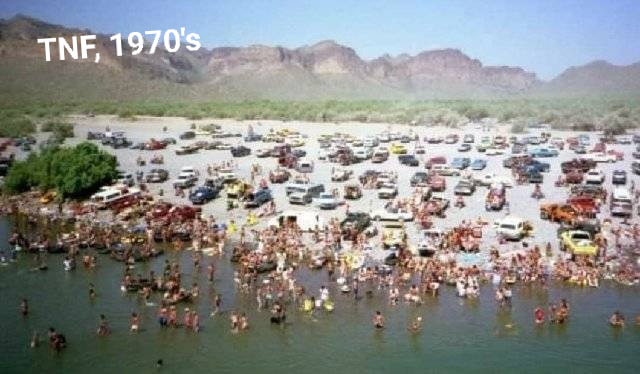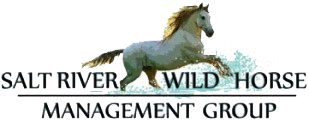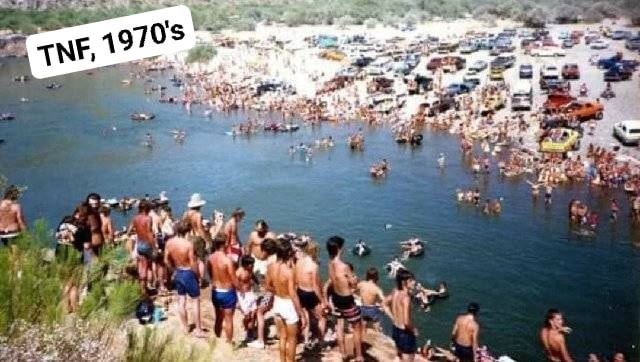
It’s almost 2024 and there is a better way!
Today there are exactly 312 Salt River wild horses on the Tonto National Forest. We mean exactly – except when Spot gets out again, and then it’s 311 temporarily.
Not one Salt River wild horse has ever been removed. Not one Salt River horse has starved, even during the worst of natural circumstances. Not one Salt River horse has ever killed or harmed a human or another animal. Not one tax payer dime has ever been spent on their day to day humane management.
We manage them humanely for the public and by the public. It’s possible because of YOUR public donations. It’s possible because of our contract with the State and strong partner, the Arizona Department of Agriculture (AZDA). It’s possible with the help of MCSO who also does their fair share (helping with horses on the road, humane euthanasia and the public)
It’s also possible, because the Tonto National Forest (TNF) is holding their ground on taking the humane route. They should actually be getting as many thanks right now, as they did complaints back then.
Why is this picture with this story? Because this is what the lower Salt River in the Tonto National Forest (TNF) looked like 40 some years ago. We think they have been doing a pretty darn good job since then, and if you ever come visit the TNF, you can see that. Listening to the public and balancing many stakeholders cannot be easy, all while trying to stick to environmental goals.
Wild horses do have an effect on their environment. However, they have as many positive effects as they have negative effects, just like any other species, including mankind. No species are in decline along the Salt River, except for the Salt River wild horses.
They are in steep decline and it’s a balancing act to make sure that they have enough genetic diversity and viability, in order to still be here long after we are all gone. Our requirements are pretty strict to get the population down fast. More than five hundred (500) foals that would have been born in the last 5 years, have not been born because of our PZP fertility control program. The foals they would have had, are not being born, and their foals and their foals, etc. Do the math if you want to.
We have saved the government a lot of money, we have saved the public a lot of anguish and we have saved the horses a lot of suffering.
It works, and anyone can come to the Salt River and see that we have one surviving 2023 foal, and many happy healthy adult horses enjoyed by thousands of people visiting our local area to watch them. Has it been easy? Is it easy? It certainly is not. Our success is due to our literal blood, sweat and tears, as well as attention to detail and keeping infallible records.
It is also due to having a steadfast lead mare who can negotiate on our behalf, lead many different programs at once, and organize a stampede of support. It is also due to real comradery, honest goodwill, and die-hard dedication of over 100 educated volunteers, who make our many programs run smoothly.
Why can we do it (on a very small budget) and the government doesn’t seem to be able to? We believe that is because you need 100% dedication and caring for the horses themselves. We care about each and every Salt River wild horse like they were our children. We turn every decision around a thousand times, before we do anything. And we defend them, we will always defend them and give them your voices, loud and clear.
It wasn’t a popular fund, our legal fund, but we found the most knowledgeable NEPA attorney in the country anyway, and the American Wild Horse Campaign helped like they always do; they are our long time coalition partners we can count on.
The lawsuit was filed in April of this year by the Center for Biological Diversity (CBD) and trophy hunting organizations. We filed a motion to intervene, which included declarations that set straight the numerous factual inaccuracies about the Salt River wild horses, such as the number of horses and facts about their diet. The plaintiffs also omitted any reference to the state law protecting the horses and authorizing the Arizona Department of Agriculture to manage them. In addition, their complaint neglected to mention that the Salt River horse management area was analyzed under NEPA in the Final Environmental Impact Statement (FEIS) for the Tonto National Forest Plan issued in March of 2022 and signed just last month.
Our motion to intervene was dismissed only because the lawsuit was dismissed and should another lawsuit be filed, we can file another motion to intervene, which we believe we should. If our legal fund would be supported like the CBD’s legal fund is supported, we could accomplish so much, for other horse herds that they are also targeting.
Are we tooting our own horn? Maybe. But perhaps we should be tooting it a lot more often and louder plus farther and wider, because then maybe people would understand that there is a better way.
It’s the alternative to letting them breed on the range and outgrow their boundaries, and then trucking them to slaughter auctions. It’s the alternative to spending millions in tax payer dollars on cruel methods. It’s the alternative to the same thing we’ve been doing for 50 years that isn’t working.
Change doesn’t come overnight, it takes an entire movement. But 2024 is almost here and the future is now. If you want to help change the course of history for our American icons just share; humane wild horse management is possible; we proved it, and now all you have to do is let everyone know, including your family and friends and your elected officials and the chief of the
Forest Service Randy Moore; just explain; THERE IS A BETTER WAY!
For all wild horses everywhere,
The Salt River Wild Horse Management Group.

